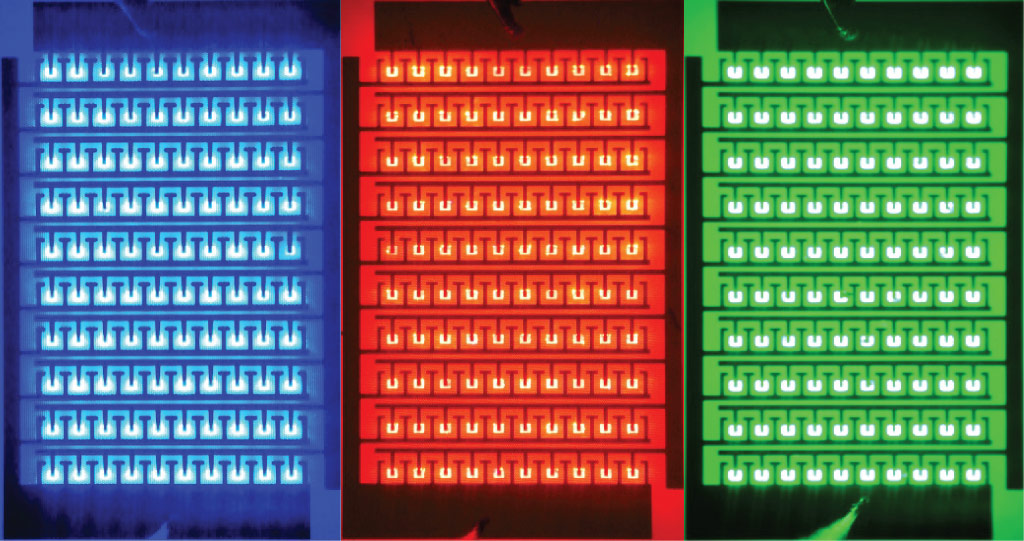Electrical Engineering
Full color LEDs cut down to size
Tiny light-emitting devices that can create all the colors in the rainbow are essential for the next generation of phones and screens.

Micrometer-scale light-emitting diodes (μLEDs) are the ideal building block for next-generation microLED displays used in head-mounted monitors, mobile phones and televisions because they are bright, respond quickly, offer longevity and consume little energy. KAUST researchers have shown that these scaled-down devices can efficiently emit light across the entire visible-light spectrum.
Just as with conventional LED displays, full-color μLEDs products will require arrays of blue, green and red light sources. Nitride-based alloys are a group of semiconducting materials that offer one route to achieving this because, with the right chemical mix, they can emit all three colors.

The research team demonstrated their red μLEDs with green and blue indium gallium nitride μLEDs to create a wide color-range device.
© 2021 Chinese Laser Press.
However, when nitride devices are reduced in size to micrometer scales, they become very poor emitters of light. “The main obstacle to reducing the size of the devices is the damage to the sidewalls of the LED structure generated during the fabrication process,” explains Ph.D. student Martin Velazquez-Rizo. “Defects provide an electrical path for a leakage current that does not contribute to the light emission.” This effect gets worse as the size of the LED shrinks, which has limited the LED size to approximately 400 by 400 micrometers.
Velazquez-Rizo, along with his colleagues Zhe Zhuang, Daisuke Iida and Kazuhiro Ohkawa, have developed bright red indium gallium nitride microlight-emitting diodes (µLEDs) of just 17 × 17 micrometers.
The team used a thoroughly calibrated atom deposition technique to create a 10 by 10 array of red μLEDs. The damage to the μLED sidewalls was then eliminated using a chemical treatment. “We confirmed with atomic-scale observations that the sidewalls had high crystallinity after the treatment,” says Velazquez-Rizo. “Performing this type of observation requires specialized tools and sample preparation.” And the leader of the research Ohkawa agrees. “Without this microscope technology, we could not realize and confirm this achievement.”
They observed very high output power of 1.76 milliwatts from each square millimeter on the device’s surface — a notable improvement on previous devices that reported an output power of less than 1 milliwatt per millimeter square. The team then demonstrated their red μLEDs with green and blue indium gallium nitride μLEDs to create a wide color-range device.
“The next step in our research is to further improve the efficiency of our μLEDs and decrease their lateral dimensions below 10 micrometers,” says Velazquez-Rizo.
References
- Zhuang, Z., Iida, D., Velazquez-Rizo, M. & Ohkawa, K. 630-nm red InGaN micro-light-emitting diodes (<20 μm´ 20 μm) exceeding 1 mW/mm2 for full-color micro-displays. Photonics Research 9, 1796‑1802 (2021).| article
You might also like

Bioengineering
Smart patch detects allergies before symptoms strike

Computer Science
Green quantum computing takes to the skies

Electrical Engineering
Micro-LEDs boost random number generation

Bioengineering
Sensing stress to keep plants safe

Computer Science
Sweat-sniffing sensor could make workouts smarter

Electrical Engineering
New tech detects dehydration by touching a screen

Electrical Engineering
A new interface for efficient electronics

Electrical Engineering




